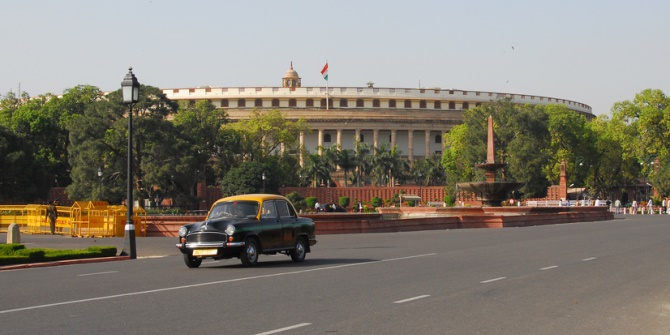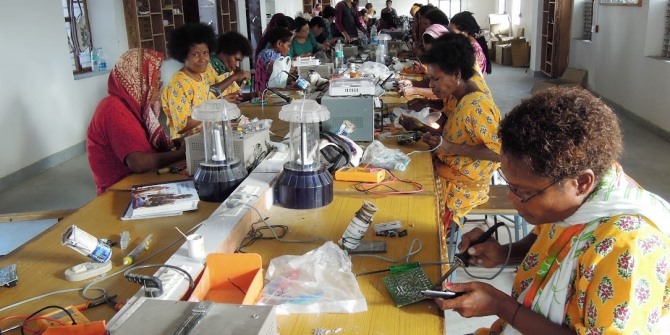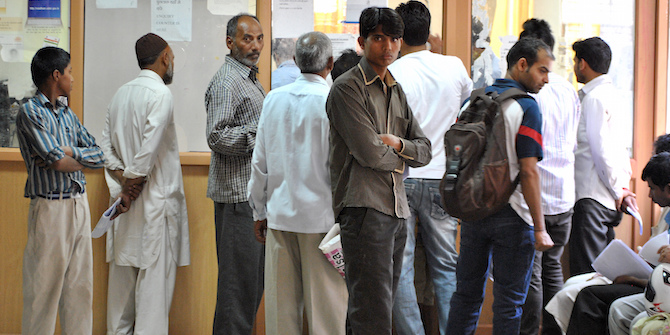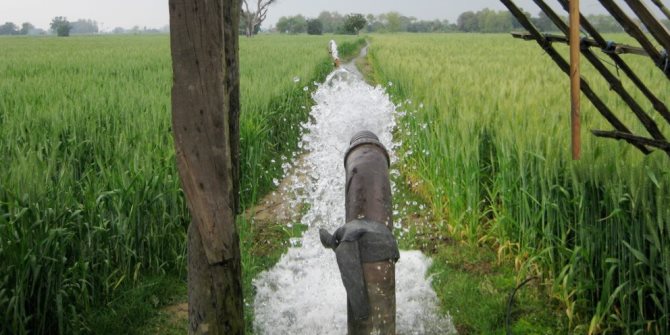 Silvia Masiero explores the computerisation of the Public Distribution System (PDS) in Karnataka, and details the assumptions and food security policy that is being advanced by the adoption of technology.
Silvia Masiero explores the computerisation of the Public Distribution System (PDS) in Karnataka, and details the assumptions and food security policy that is being advanced by the adoption of technology.
As per the IFPRI Global Hunger Index report, hunger and malnutrition persist at alarming rates in India today. The Public Distribution System (PDS) is the main food security programme in the nation, based on rationed distribution of basic-need items – primarily rice, wheat, sugar and kerosene – to below-poverty-line (BPL) households. To leverage the potential of new technologies for anti-poverty nets, the National E-Governance Plan mandates computerisation of the PDS for all states. Currently, different states are at different stages of the digitalisation process, Karnataka being one of the most advanced.
The IT system for the PDS, developed by the National Informatics Centre (NIC) Karnataka, consists of a back-end infrastructure, in which details of all ration card holders are registered into a database (available at http://ahara.kar.nic.in), and a front-end one, constituted by weighing-cum-point of sales machines installed in the ration shops (see Fig. 1). While the Ahara database covers the whole state, the machines – designed by a private firm, Essae Teraoka – are part of a pilot project of end-to-end computerisation, which partially covers 6 of the state’s 29 districts. In the ration shops covered by the project, citizens buy their PDS goods through the machine: as they require their rations, they are identified through their ration card number and thumb impression. As the ration dealer weighs commodities, the machine’s speakers announce (in Kannada) the type and quantity of goods being sold. When the transaction is completed, the bill is printed automatically.

The purpose of mediating PDS transactions through the machine is twofold. As noted by the former Secretary for Food, Civil Supplies and Consumer Affairs, the main issue is that of non-entitled users trying to access the system: before the creation of the Ahara database, “temporary ration cards” had been released to many, without any proper verification of entitlements. To curb misappropriation of PDS supplies, the machine has made sales conditional to secure identification, as only verified PDS beneficiaries can access the subsidised goods. Second, the machine is designed to prevent misbehaviour from ration dealers: as the speakers announce what is being sold and bills are printed, they are “forced” (at least on paper) to sell exact PDS entitlements, at their correct price. Furthermore, they cannot pretend “running out” of PDS goods, since the balance between goods lifted and sold is registered by the machine every month, and periodically controlled by food inspectors.
Both problems – misappropriation by users and ration dealers – are corroborated by statistics on PDS diversion (Planning Commission of India, 2010), whose pervasiveness (as I have argued in a recent article on Kerala) has motivated computerisation of the PDS across states. The point is, though, that the Karnataka system seems to embody strong assumptions on patterns of corruption in the PDS, and on the measures to be taken against them. What assumptions does a technology of this kind reveal?
The first policy statement, emerging here, is that inclusion errors (assigning PDS benefits to non-entitled citizens) are to be prioritised over exclusion errors (i.e. excluding needful beneficiaries). The machine’s design focuses, indeed, on preventing non-entitled users from accessing the programme: no dedicated system is into place, instead, for citizens who, while genuinely entitled to the PDS, are factually unable to access it. Even in a relatively well-functioning PDS like that of Karnataka, exclusion is still widespread (Swaminathan, 2008): to poor households excluded by BPL criteria we need to add, after computerisation, citizens whose details are “not recognised” by the machine, which may result in rations being denied. During a field trip across Bangalore, Tumkur and Kolar districts, we met users whose rations had been denied for months after computerisation: inability to pursue biometric registration, mismatching fingerprints, and failure of the ration shop to pay for connectivity were among the most frequently cited reasons for this. These issues lead to raise concerns about the current strategy, in which many citizens’ right to food is put into question by the policies advanced.
Second, the machine controls transactions at the ration shop level – but does not, per se, monitor the previous stages of the PDS supply chain. A software programme has been designed for usage by foodgrain wholesale points, from which ration dealers lift their foodgrains: its utilisation is, however, still in its early stages, and not yet monitored at the state level. The decision of focusing on ration shops reflects the assumption that diversion occurs primarily at this stage: be it through customers misappropriating goods, or though ration dealers reselling them on the market, the ration shop is seen as the unit at the core of the problem. Still, this is not matched by evidence on Karnataka, where the rice mafia – the phenomenon of diversion of PDS commodities to the market – is articulated through several levels of action, and often results in the “disappearance” of PDS commodities way before they even reach the ration shops. In such situation, concerns regarding the absence of supply chain monitoring seem to be well-grounded and motivated.
On the one hand, Karnataka’s efforts towards a more accountable PDS, pursued through computerisation, are remarkable. On the other hand though, a programme designed in this way advances a very specific agenda, in which two assumptions can be envisaged: the urgency of tackling inclusion above exclusion errors, and the importance of focusing on corruption in the ration shops, as opposed to diversion across the supply chain. Both assumptions, widely contested among PDS beneficiaries, deserve thorough questioning: we believe that revising them, in favour of a more holistic approach to monitoring, is key to maximising the benefits of computerisation.
Cover image: Ration shop in Bangalore. Credit: Silvia Masiero
About the Author
 Silvia Masiero recently completed her PhD in Information Systems at LSE and is now a Teaching Fellow in LSE’s Department of International Development. She tweets @SilviaHedley.
Silvia Masiero recently completed her PhD in Information Systems at LSE and is now a Teaching Fellow in LSE’s Department of International Development. She tweets @SilviaHedley.
You can view previous posts by Silvia here.







